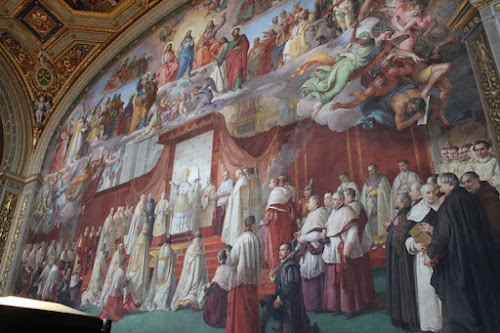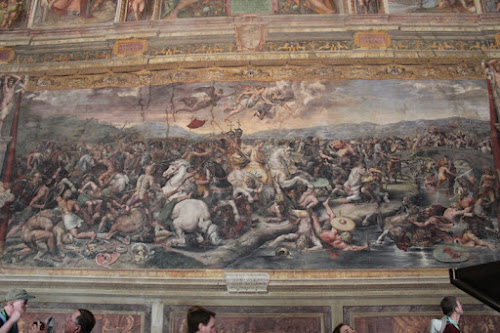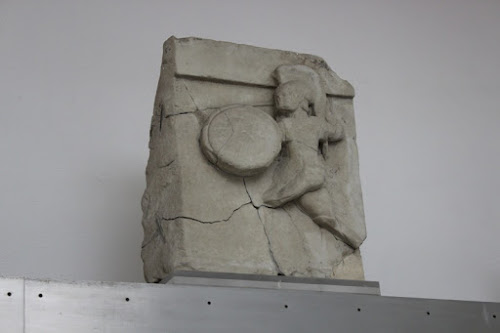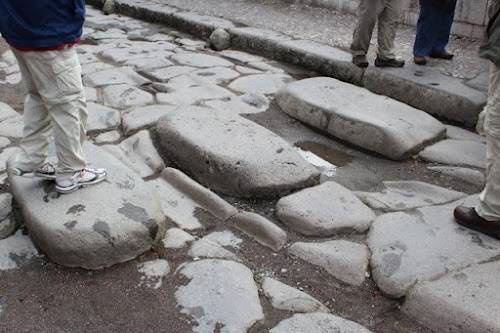We started our day visiting 2 churches built on sites related to Paul's death. The first was built on the supposed site of his execution. This relief depicts his beheading.
This is the stone he was beheaded on. When Constantine legalized Christianity, articles like these were collected and brought into churches as reminders of the martyrs. That's why we still have them today.
The second church was built on the jail where Paul was held during the last days of his life. This is the alter at the front. Neither of these churches are very large.
This is the prison underneath the church.
Then we visited St. Paul's basilica. This basilica is built on the grave of Paul. Archeologists have confirmed that there is a sarcophagus with bones dating from the first century under the alter, which gives so me level of confidence to the claim that it is Paul's burial site. Regardless, the church is massive.
This is the courtyard out in front.
The papal alter placed directly on the tomb of Paul.
The sarcophagus of Paul
Around the basilica is a record in pictures of every pope who ever served, well almost. It starts with Peter.
And ends with Benedict the 16th. Francis will be added soon and the spotlight moved.
Then we visited a Christian catacomb. We couldn't take pictures inside, so this is all you get to see. This catacomb has 4 levels and miles of tunnels. I believe the guide said there was over 100,000 bodies buried inside. Most of the tombs were raided for the bones and the bones sold to churches when the churches were anxious to get bones of martyrs. Whether or not the bones were actually from martyrs was not verified at the time.
Then we took a whirlwind tour of the Vatican Museum. Lots of nice pieces from all over the world. This is one of the tapestries on display.
A map from a long time ago. I mentioned it was a whirlwind tour.
Then we walked through some of the old papal apartments. The older ones had artwork covering the walls.
This one depicts Constantine conquering the barbarians.
How would you like to have this in your dining room.
After visiting the Vatican Museum we moved on to The Sistine chapel. No pictures there either. We bought a nice book though to bring home and we did find the Oracle of Delphi depicted alongside the prophets.
Then we moved on to St. Peter's basilica. Here is St. Peter's square from the front of St. Peter's basilica before we went in.
Mary and Jesus after his crucifixion. This is one of Michelangelo's greatest works.
The top of the papal alter in St. Peter's basilica.
The bottom of the papal alter. The bronze used to make the papal alter was recycled from the Parthenon.
Here we are in front of St. Peter's basilica.









































































